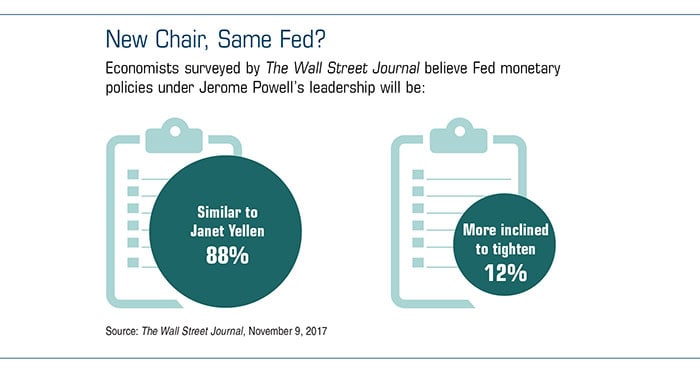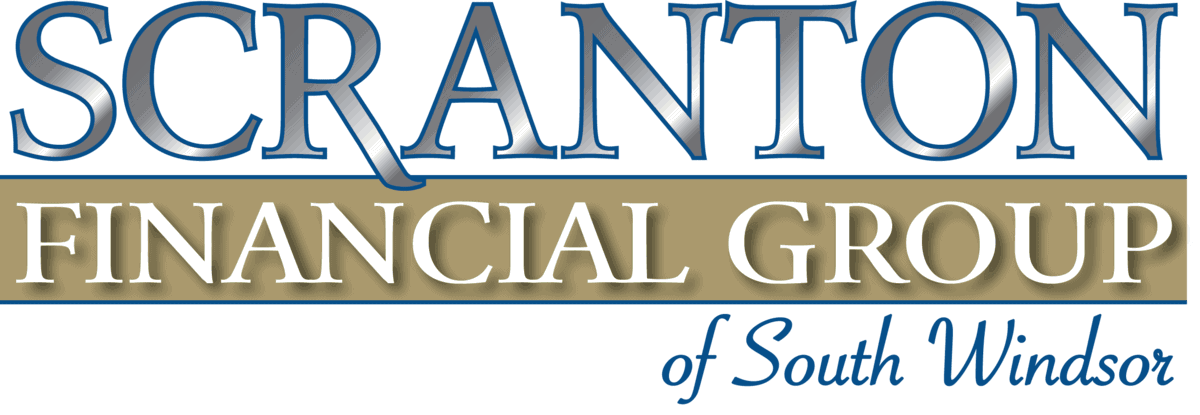
The Federal Reserve System is the central bank of the United States. It includes a network of 12 Federal Reserve Banks and 24 branches around the nation.
The Federal Open Market Committee (FOMC) is responsible for setting monetary policies in accordance with the Fed’s dual mandate to foster maximum employment and price stability. Seven members of the Board of Governors are appointed by the president and confirmed by the Senate to serve staggered 14-year terms. The Fed chair and vice-chair serve four-year terms and may be reappointed.
President Trump selected Fed governor Jerome Powell to succeed Janet Yellen as Federal Reserve chair at the end of her first term in February 2018. Mr. Powell does not have a Ph.D. in economics, but he does have a law degree. He worked at an investment bank and for the Treasury Department before his appointment to the Board of Governors in 2012.1
Economic Powerhouse
Fed governors monitor domestic and international economic and financial conditions, lead committees that study current issues, meet with government organizations, and may be called to testify before Congress. The seven governors make up the voting majority of the FOMC, with the other five votes coming from the president of the Federal Reserve Bank of New York and four other Reserve Bank presidents, on a rotating basis. The committee typically meets eight times a year to discuss the outlook for the U.S. economy and monetary policy options.
Interest Rate Decisions
The federal funds rate is the interest rate at which banks lend funds to each other overnight to maintain legally required reserves. The FOMC sets a target range for the funds rate, usually a 0.25% spread, with two specific rates that act as a floor and a ceiling to push the funds rate into that target range. Although the federal funds rate is an internal rate within the Federal Reserve System, it serves as a benchmark for many short-term rates set by banks and can influence longer-term rates as well.
Adjusting the federal funds rate is one of the tools the central bank uses to influence interest rates, economic growth, and inflation. Theoretically, lowering interest rates fuels demand for credit and encourages consumers and businesses to spend and invest. Raising interest rates helps to slow economic activity when inflation is seen as the larger threat.
The End of Easy Money?
With the U.S. economy growing steadily and the labor market at or near full steam, the Federal Reserve anticipates gradually lifting the federal funds rate in 2018. It has also begun shrinking the size of the huge $4.5 trillion bond portfolio that was accumulated to help stabilize markets during and after the recession.2
The Fed stopped adding to its balance sheet in 2014, but has been reinvesting the proceeds of bonds that mature. Officials are now allowing increasing amounts of securities to mature each month without being replaced. Normalizing the balance sheet could reduce overall demand for government bonds and help push up longer-term interest rates.
Mr. Powell’s appointment is largely expected to bring continuity in monetary policies, but he may be open to softening some of the burdensome banking regulations implemented during the financial crisis.3 Even so, the new chairman is taking over at a time when the U.S. economy and the labor market seem to be heating up.4
Investors should remember that future Fed actions will depend on economic conditions. If inflation picks up speed, higher interest rates will likely follow, despite any previous forecasts.

